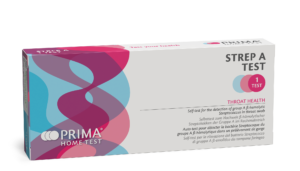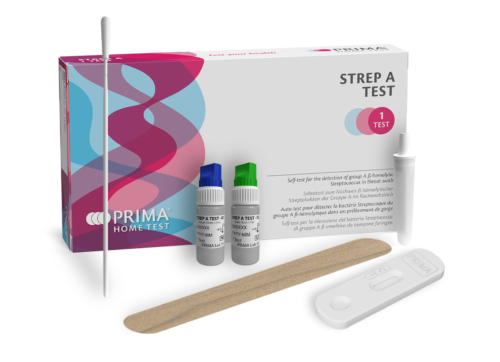
Tuesday February 13th, 2024

Source: https://www.uppa.it/scarlattina/
Group A Streptococcal infections (iGAS) are a serious public health concern worldwide. The bacteria responsible for these infections, Streptococcus pyogenes , can cause a wide range of illnesses, both non-invasive and invasive diseases (iGAS), from pharyngitis and mild skin infections to life-threatening conditions such as glomerulonephritis, rheumatic fever, necrotizing fasciitis and toxic shock syndrome1.
Streptococcal infections became of particular public attention in winter 2022-2023, after some news reported the data of death of at least 30 children by the infection. Indeed, in that period of time, there was an increase in cases of iGAS infections in several countries, including France, Ireland, the Netherlands, Sweden and the United Kingdom . In England in particular, between September 19th to 22nd December 2022 in total, 122 people have died from the invasive form of the bacterial infection, which represents a higher number of cases than seen in a typical year. Of these, 25 of the deaths were under-18s. There have been a further three deaths of children in Northern Ireland and Wales combined2.
In this article, we will provide a comprehensive overview of iGAS infections, including their causes, symptoms, diagnosis, treatment and prevention.
S. pyogenes is a gram-positive bacterium that is commonly found in the human respiratory tract and on the skin. It can easily spread from one person to another through direct contact with an infected person through droplets in the air when he/she coughs or sneezes or by touching contaminated surfaces. Behaviors that facilitate getting GAS infections are: not washing their hands well, living in crowded places and having a weak immune system. Therefore, GAS infections can happen frequently in schools, daycares, hospitals and nursing homes4.
In adults and very young children, S. pyogenes is mainly responsible for throat infections (pharyngitis, tonsillitis, etc.) and skin infections. About 15 – 35% of all sore throats are caused by streptococcus; school-aged children may get one to three strep throat infections every year. However, at greater risk of developing complications are children between 5 and 15 years of age.
The symptoms of GAS infections can be different depending on the type and severity of the infection. The most common ones are related to pharyngitis, such as pain in the throat, swollen tonsils, with or without plaques, and fever, chills, headache, skin rash and muscle pain. One of the most serious invasive infections is necrotizing fasciitis, a condition in which the bacteria destroy the soft tissue of the body, and toxic shock syndrome, which is when the bacteria make toxins that cause fever, low blood pressure and organ failure5.
GAS infections can be hard to diagnose because the symptoms can be similar to those of other infections. A definitive diagnosis requires laboratory testing of blood, tissue, or other body fluids to detect the presence of S. pyogenes through bacterial culture.
The early diagnosis of streptococcal pharyngitis is particularly important to try to prevent complications. Nowadays, rapid lateral flow tests can also be used as a diagnostic tool to check for strep throat. They give results in a few minutes in an easy-to-use way: a swab is used to take a sample from the throat and the test is performed on a simple device. If the test is positive, it means that the person has a streptococcus infection, the diagnosis of pharyngitis is confirmed and there is no need to do a laboratory bacteria culture, which takes longer.
The purpose of the rapid tests is to help doctors decide if a person has a strep A infection and if they need antibiotics. This can help to reduce unnecessary use of antibiotics6.
The treatment of GAS infections depends on the severity of the infection. Mild infections can be treated with antibiotics, while severe ones may require hospitalization and intensive care. Sometimes, surgery may be needed to remove infected tissue. It is very important to diagnose and treat GAS infections early to avoid complications and reduce the risk of death.
Therefore, it is fundamental to report symptoms and results of rapid tests to the doctor, who will assess the clinical picture and decide how to proceed.
To prevent GAS infections, it is important to have good hygiene practices, such as washing hands regularly and covering the mouth and nose when coughing or sneezing. People who have a weak immune system should avoid contact with people who have iGAS infections. Currently there are no vaccines available for GAS infections yet, but research is ongoing.
To sum up, GAS infections are a serious public health problem that can cause a wide range of diseases, from mild skin infections to life-threatening conditions such as necrotizing fasciitis and toxic shock syndrome. It is very important to have good hygiene habits and to early diagnose and treat GAS infections to avoid complications and reduce the risk of death. Further research is needed to develop effective vaccines and treatments for GAS infections.
Even though in the winter season 2023-2024 the level of infections appears to be in line with average season, ECDC and other public health authorities recommend that Clinicians should continue to maintain a high index of suspicion in relevant patients who might have GAS infections, as early detection helps to start specific and supportive therapy.
 Among the wide range of products, we offer a rapid qualitative assay which helps to find out whether a sore throat is caused by the bacterium streptococcus pyogenes (Strep A) in just 5 minutes. The rapid test is highly accurate in detecting specific proteins of Strep A bacteria in a pharyngeal self-swab. Our products are available for private sales on Amazon.
Among the wide range of products, we offer a rapid qualitative assay which helps to find out whether a sore throat is caused by the bacterium streptococcus pyogenes (Strep A) in just 5 minutes. The rapid test is highly accurate in detecting specific proteins of Strep A bacteria in a pharyngeal self-swab. Our products are available for private sales on Amazon.
Note: this article is for informational purposes only and does not constitute medical advice. If you have any questions or concerns about your health, please consult your doctor or healthcare provider
